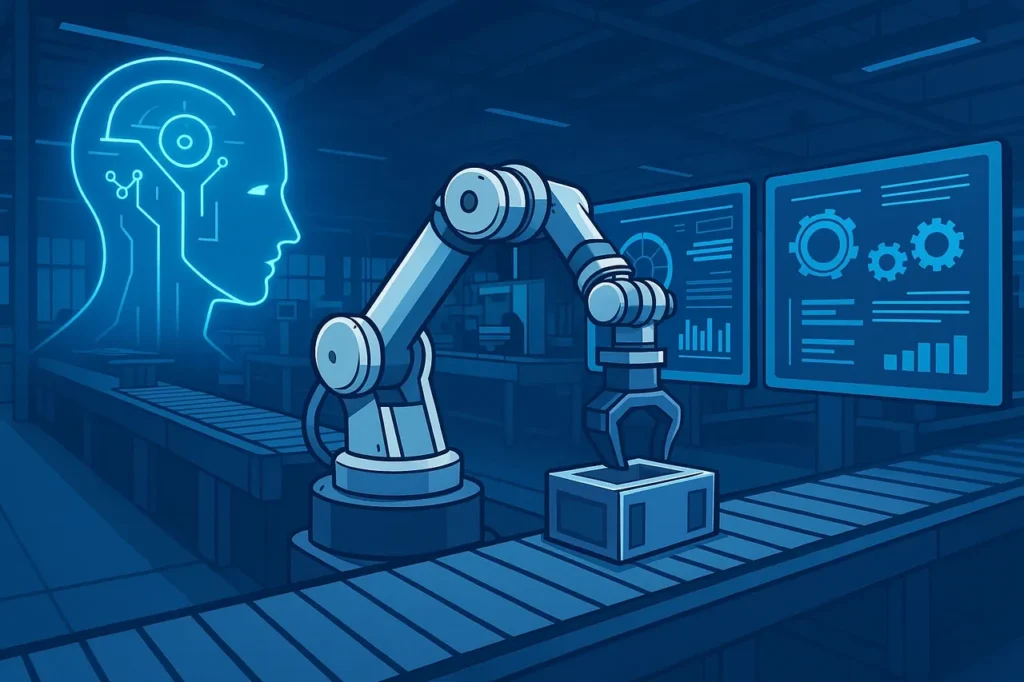When AI Gets a Body: What Physical AI Means for Manufacturing

With the constant articles on it, you’re probably getting tired of hearing about AI but it’s quickly becoming an important daily tool. Most of us have used it for document writing, creating menus, or created images. Now imagine it with arms, cameras, and a wrench.
That’s essentially what’s happening in modern manufacturing. “Physical AI agents” are the next-gen robots or machines that don’t just follow instructions. They see what’s happening, make decisions in real time, and adjust their actions accordingly.
For example: An automated welding arm that detects flaws mid-pass and corrects without stopping, or warehouse bots that reroute themselves when someone leaves a cart in the way.
It’s not just about automation anymore — it’s about adaptability.
What Makes These Agents Different?
Traditional automation is great at repetition but terrible at improvisation, like an early piano player. Physical AI agents are more like jazz musicians: they follow a structure but riff when the environment changes.
This leap comes from combining:
- Sensors (to gather data)
- AI models (to interpret and decide)
- Actuators/robots (to carry out the task)
Together, they allow machines to handle variability which is the Achilles’ heel of most factory automation.
What This Means for Manufacturing Teams
If you run a plant, it means fewer operators babysitting machines but more people who can install, maintain, and train these systems. That’s not your average technician. You’ll be looking for:
- Robotics integrators who understand both hardware and software.
- AI-savvy engineers who can retrain models when they drift.
- Cross-functional tinkerers who speak both PLC and Python.
These are not easy hires. And the best ones often come from backgrounds your HR filters will never surface — like ex-military techs, automation nerds from the maker community, or engineers who spent their nights building automation in their garage.
What Recruiters (and Leaders) Should Be Asking
- Is our hiring still optimized for yesterday’s skillsets?
- Do we have an internal pipeline to grow hybrid-skilled talent?
- Can we explain to candidates why we’re investing in this tech — and why it’s not just a headcount reduction strategy?
Because here’s the truth: AI doesn’t replace people. It changes what the right people look like.
One Last Thought
Most manufacturers think they’re too small or “not techy enough” to mess with AI-driven machines.
But the tech is rapidly expanding and the companies that figure out how to pair it with the right humans will pull ahead fast. If your hiring strategy hasn’t changed since the last machine upgrade… it might be time.
Automation isn’t about replacing people — it’s about using them better. Especially when the cost of everything else is going up.
The companies that win won’t be the ones who “automated the most.” They’ll be the ones who figured out where people matter most… and used their talent wisely.
